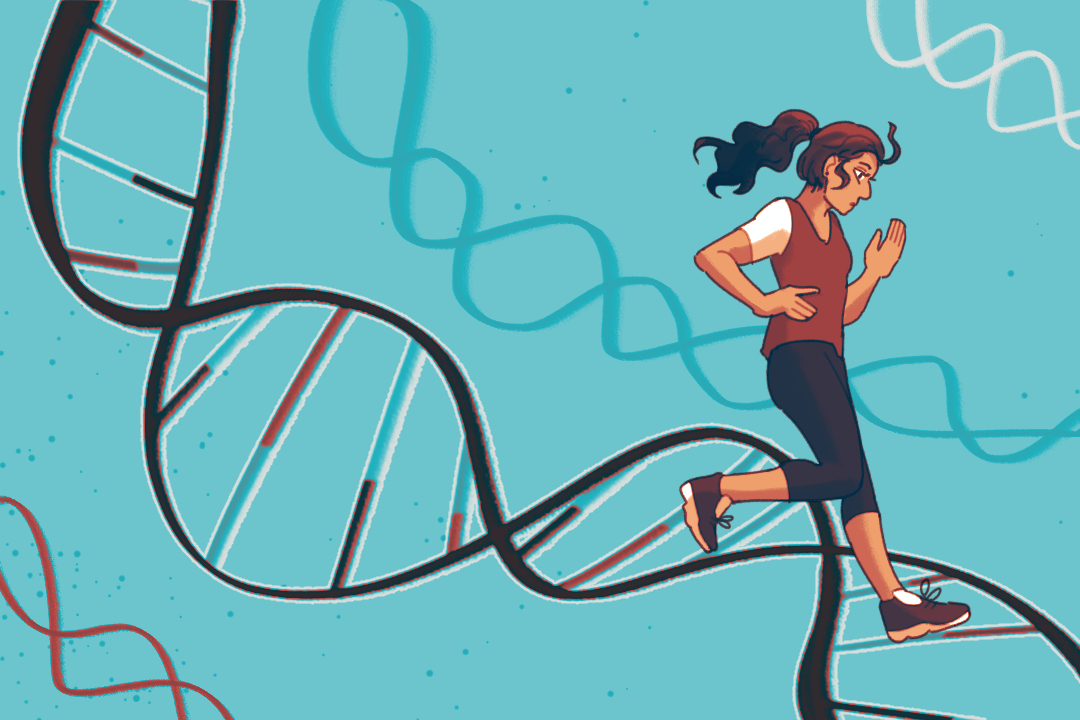The time period: the late 1900s. The place: Shanghai, China. There was a project being organized by the party in power, which was bent on increasing China’s worldwide popularity through one method alone: sports.
The nation instituted a Soviet-style sports development program intent on pumping out the country’s greatest athletes. The program would eventually produce Yao Zhiyuan and Fang Fengdi, two of China’s tallest citizens. Shanghai officials pushed the two to marry in order to inch closer to their end goal: the perfect athlete.
The result of their marriage was a baby boy — a boy that would grow to be 7’6’’ tall. A boy who was forced to sacrifice his academic dreams for the sport of basketball. A boy who would eventually become an eight-time NBA all-star.
That boy was Houston Rocket legend Yao Ming.
Was Yao Ming genetically engineered? Not exactly. Was he a product of artificial selection, humans toying with reproduction to produce desirable traits in their offspring? Most certainly. Are the two concepts eerily similar in spirit? That’s up for debate.
We’ve already seen what playing god looks like in the sports world, but human gene editing could take it to the next level. Genome editing can be done by technologies that give scientists the ability to alter DNA. The latest technology used for this type of science is known as CRISPR, and it allows researchers to edit gene sequences with great efficiency.
While the intricacies of genetic engineering may sound like the plotline of a Christopher Nolan movie, it has been a real part of modern science for some time — scientist He Jiankui has already attempted to create genetically modified babies immune to HIV. And although editing inheritable genes is a criminal offence in Canada, this has not stopped researchers from advocating for it. Canadian scientists of the Stem Cell Network in particular have advocated for the ban to be lifted so they could learn more about human reproduction.
The other factor in play here is gene editing’s potential to make humans better at strenuous physical activity. Scientists at the University of Pennsylvania School of Medicine have done extensive research into this niche subject. H. Lee Sweeney, for example, was a scientist at the University of Pennsylvania who conducted studies on gene therapy in 1998.
Sweeney was looking for a way to reverse the effects of muscular disorders like Duchenne muscular dystrophy (DMD) in mice. The disease revolves around a protein named dystrophin. For patients with the disease, this protein becomes dysfunctional over their lifetime, which eventually leads to a complete loss in muscle function.
Sweeney, however, worked with a breed of mice with a mutation in their dystrophin gene that already displays a DMD-like phenotype. He discovered that when they inserted the gene that encodes for a protein called internal growth factor into the mice’s muscle cells, the cells grew.
Results also showed that as the mice aged, their muscle mass increased by about 40 per cent, and they were still just as strong and as fast as they had been when they were young. In that single experiment alone, targeting just one gene had the result of reversing the effects of aging and increased strength. Some would say Sweeney was dealing with super mice.
Experiments in animals can’t always be replicated on humans with ease. To get insight into this, The Varsity interviewed Assistant Professor Tod Thiele at the Department of Biological Sciences. Thiele has experience working with CRISPR in zebrafish in collaboration with The Hospital for Sick Children. When asked if the experiments scientists have done on smaller animals could be replicated in humans, he responded that “in theory, you could probably do it in humans, but… there’s a lot of ethical problems that come with this.”
There are also logistical problems when scaling experiments up to humans. The US National Institute of Health points out that “scaling up [the variables from this experiment] from a 25 g mouse to a 75 kg human will prove challenging.” There is also the potential for health risks — high levels of Insulin-like Growth Factor-1 (IGF-1) have been associated with the development of cancers.
The Pew Research Center surveyed 1,001 adults about potential developments in science and technology in 2014. The survey’s results showed that 66 per cent of Americans think it would be a change for the worse if “prospective parents could alter the DNA of their children to produce smaller, healthier, or more athletic offspring.” Thiele mirrored these sentiments, saying that he would be okay with using CRISPR to cure genetic diseases, but was against the creation of “designer babies.”
But do either of these solve the problem? Some of the greatest athletes to ever walk on this earth have something in common — they are all biologically gifted. Michael Phelps’ wingspan measures 6’7’’ — three inches longer than his height, which is unusual. Usain Bolt is believed by some scientists to have a gene called ACTN3 that results in a higher proportion of fast-twitch muscle fibers, which are activated during short but powerful moments of muscle activity.
Perhaps biological variance is what makes humans special. It’s what puts the “oohs” in our “aahs” every time we turn on the TV to watch a sports event. Most importantly, it makes athletic brilliance, at least in part, a game of chance. Maybe that’s the way it should be; athleticism should be determined through probability, not by a petri dish.


